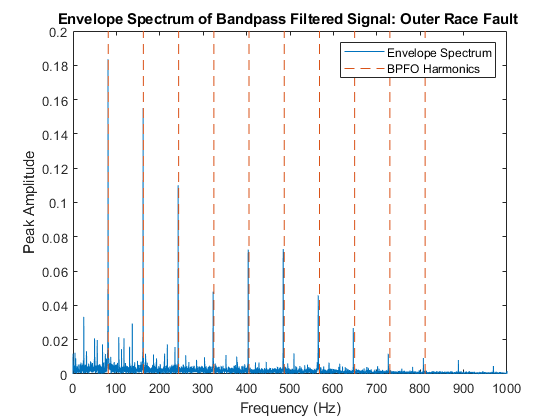Manage System Data
Data analysis is the heart of condition monitoring and predictive maintenance. Designing algorithms for predictive maintenance requires organizing and analyzing large amounts of data while keeping track of the systems and conditions the data represents.
Predictive Maintenance Toolbox™ provides tools for managing sensor data stored locally and remotely, as well as for generating simulated data by running a Simulink® model. The main unit for organizing and managing multifaceted data sets in Predictive Maintenance Toolbox is an ensemble. An ensemble is a collection of data sets, created by measuring or simulating a system under varying conditions. You can store smaller ensembles in forms such as tables, timetables, and cell arrays. Manage larger ensembles using ensemble datastore objects. For more information about how ensembles work and how to use them, see Data Ensembles for Condition Monitoring and Predictive Maintenance.
The Diagnostic Feature Designer app includes interactive tools for processing data and extracting features. The app accepts data sets in various forms, consolidates the data within the app, and manages that data internally during a session. For more information on the app, see Explore Ensemble Data and Compare Features Using Diagnostic Feature Designer.
Objects
fileEnsembleDatastore | Manage ensemble data in custom file format |
simulationEnsembleDatastore | Manage ensemble data generated by generateSimulationEnsemble
or by logging simulation data in Simulink |
workspaceEnsemble | Manage ensemble data stored in the MATLAB workspace using code generated by Diagnostic Feature Designer (Since R2020a) |
Functions
generateSimulationEnsemble | Generate ensemble data by running a Simulink model |
read | Read member data from an ensemble datastore |
writeToLastMemberRead | Write data to member of an ensemble datastore |
hasdata | Determine if data is available to read |
reset | Reset datastore to initial state |
subset | Create new ensemble datastore from subset of existing ensemble datastore (Since R2021a) |
numpartitions | Number of datastore partitions |
partition | Partition a datastore |
progress | Determine how much data has been read |
tall | Create tall array |
Topics
Ensemble Datastore Basics
- Data Ensembles for Condition Monitoring and Predictive Maintenance
Algorithm design with Predictive Maintenance Toolbox uses data organized in ensembles. You can generate ensemble data from a Simulink model or create ensembles from existing data stored on disk. - Generate and Use Simulated Data Ensemble
If you have a Simulink model of your system under fault conditions, you can generate an ensemble of simulated data for developing predictive-maintenance algorithms. - File Ensemble Datastore with Measured Data
Use a file ensemble datastore to manage and interact with large sets of data collected from operation of your system under varying conditions. - File Ensemble Datastore Using Data in Text Files
Create and use afileEnsembleDatastoreobject to manage an ensemble of data stored in a plain-text format.
Data Management in the Diagnostic Feature Designer
- Explore Ensemble Data and Compare Features Using Diagnostic Feature Designer
Follow this workflow for interactively exploring and processing ensemble data, designing and ranking features from that data, and exporting data and selected features, and generating MATLAB® code. - Organize System Data for Diagnostic Feature Designer
Organize measurements and information for multiple systems into data sets that you can import into the app. - Import and Visualize Ensemble Data in Diagnostic Feature Designer
Import an ensemble member table from your MATLAB workspace, define variable types, and view the data using interactive plotting options. - Prepare Matrix Data for Diagnostic Feature Designer
Convert single-member matrices to an ensemble table for import into the app.





